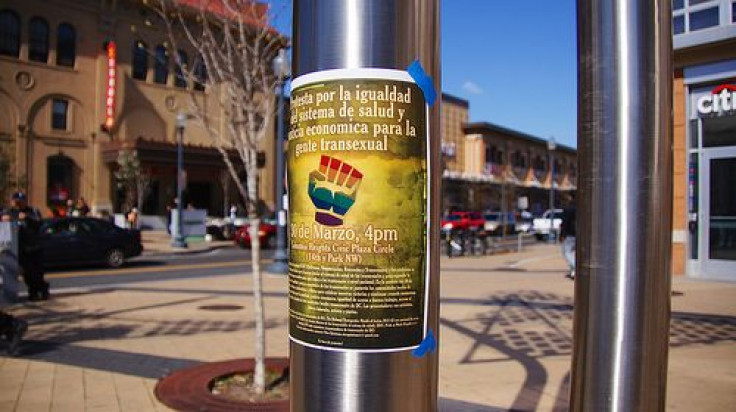Transgender Community Faces ‘Gender Panic’: What The Olympics, Violent Crime, And Bathrooms Have In Common

In 2006, New York City was fully prepared to pass a benchmark piece of legislation. Or at least, it thought it was.
The law would allow transgender and intersex people to retroactively change the sex on their birth certificate to reflect their new gender identity. Major media outlets reported, now too hastily, that the measure would become law. People of ambiguous, unknown, and hybrid genders would be given the ability, in a way, to reclaim their identity — having proven it for two years through their lifestyle — to remove it from public labeling systems and reappropriate it as their own.
The Board of Health ultimately rejected the measure. The transgender community lost the battle. As of today, the best they can do is opt out of listing any gender at all.
Sociologists Kristen Schilt and Laurel Westbrook have come to call the mechanism behind this fear of policy change, “gender panic.” The team unpacks this term in great detail in their latest study of transgender struggles, which they’ve published in Gender and Society. In it they explore the reasons that the Board of Health ultimately shot down the measure.
"The backlash was intense," said Schilt, assistant professor of sociology at the University of Chicago. "There was such a fervor over taking the surgery requirement out, a sense of, 'Absolutely not. There's going to be chaos.'"
Gender panic fits in the same pipeline as gay panic and moral panic — terms that explain deep, visceral fears people hold about how the status quo may change. Though a classically blue city, NYC experienced gender panic in 2006 because the potential rights bestowed upon transgendered people began to feel too personal. Schilt calls this a violation of “naturalness.” It’s a haunting sense that a person’s basic understanding of the male-female gender binary is wrong. When those misunderstandings begin to seep into policy decisions, she says, “that's when the panic starts to get really hot."
In other words, people are generally okay with transgender people living their lives independently, declaring their sexual identity on their own. But if a man who’s undergone a vaginoplasty enters the women’s bathroom, gender panic sets in.
These cases trace back to the 1960s, the researchers argue, when transgender people were just beginning to feel accepted enough to emerge voluntarily, but whose presence was only accepted in non-sexual contexts. The workplace? No problem. The locker room? No thank you. "We found that what calms down the panic is having a very clear policy about who's in your bathroom," Schilt said, "and that policy relates very distinctly to genitalia."
In this way, Schilt and Westbrook point to the Olympic Games’ Stockholm Consensus, an inflexible set of rules set by the International Olympic Committee that disallows certain participation according to gender, yet allows others. Athletes who have male genitalia, for instance, cannot compete as women. Yet, it is not a requirement for individuals to have male genitalia to compete in men’s events. These hardline stances make gender panic a non-issue in international competition, the team argues.
Ultimately, gender panic is an irrational fear. There is no science to back up a person’s anxiety that a transgender person is more likely to physically or sexually assault someone, in bathrooms, the workplace, or otherwise. Still, "there's an opposition that's asking, 'But what if?'" Schilt said. People respond most viscerally to that which is foreign to them. Social psychologists call this “social identity theory.” It explains why people lump others either into their “in-group” or “out-group.” It’s a mechanism for protection.
Controversies arise, of course, when one group demands to be seen as legitimate and natural, not strange and dangerous. Men who have decided to become women, Westbrook explains, often face a far greater sense of gender panic than the other way around, mostly because women have been groomed, historically and culturally, to see themselves as weaker.
"Women have been taught that someone is always looking to attack us," she said. "We have to be extra cautious or that attack will be successful."
Transgendered men who enter women’s bathrooms not only ignite a deep, unsettling fear in the women populating that restroom, but also raise the women’s blood pressure and heart rate, and turn their attentions away from feeling safe and prompt them to frantically locate the nearest exit.
Schilt and Westbrook offer encouraging evidence, however. Children, with their boundless innocence, incite far less gender panic when policy decisions are made to accommodate their transgender status. In August of this year, California became the first state to pass a law allowing transgender public school children to choose a sports team or bathroom based on their self-ascribed gender. No mention is made in the law about the child’s physical gender.
The researchers hope such policies involving children will one day flood into the population at large. "It's harder to have a really negative reaction to a child,” Schilt said.



























